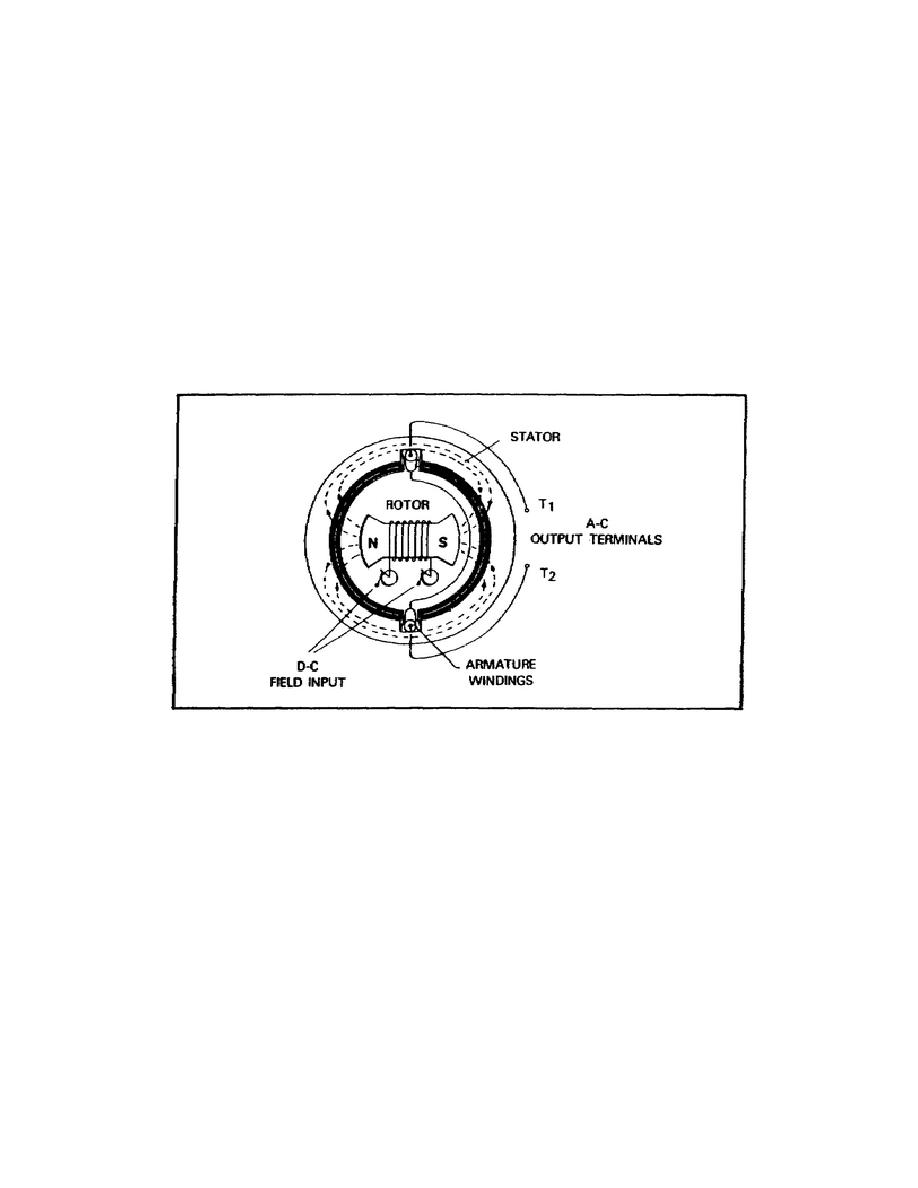
MM0704, Lesson 3
The revolving-armature AC generator is seldom used. Its primary limitation is that its output power is conducted
through sliding contacts (sliprings and brushes), which are subject to frictional wear and sparking. In addition, they are
exposed and thus liable to arc-over at high voltages. Consequently, revolving-armature generators are limited to low-
power and low-voltage applications.
Revolving-field. The revolving-field AC generator (figure 3-10) is by far most widely used. In this generator, DC
from a separate source is passed through windings on the rotor by means of sliprings and brushes. This maintains a
rotating electromagnetic field of fixed polarity (similar to a rotating bar magnet). The rotating magnetic field,
following the rotor, extends outward and cuts through the armature windings imbedded in the surrounding stator. As
the rotor turns, alternating voltages are induced in the windings since magnetic fields of first one polarity and then the
other cut through them. Since the output power is taken from stationary windings, the output may be connected
through fixed terminals directly to the external loads as through terminals T1 and T2 in the figure. This is an advantage
because there are no sliding contacts; the whole output circuit is continuously insulated, thus minimizing the danger of
arc-over.
Figure 3-10. Rotating-Field AC Generator.
Sliprings and brushes are used on the rotor to supply DC to the field. They are used because the power level in the
field is much lower than in the armature circuit.
Rating of Generators: Volt-Amperes, Power Factors, and Power. From studying inductance and capacitance, you
know that, in some AC circuits, voltage and current are not always in phase and that there may be various leading and
lagging phase relations between voltage and current. In AC generators, because alternating voltages and currents are
continually varying in a sinewave manner, it is possible that the voltage and current waves may not be in phase.
Whether the voltage and current of any AC circuit are in phase or out of phase depends upon the type of circuit
elements forming the load of the circuit.
65


 Previous Page
Previous Page
